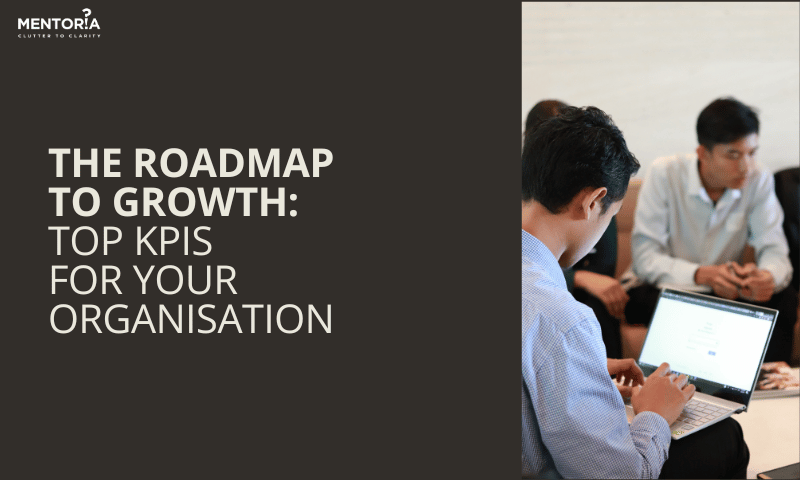The Roadmap To Growth: Top KPIs For Your Organisation

In the fast-paced landscape of today’s business world, organisations are constantly seeking ways to stay ahead of the curve, adapt to changing market dynamics, and drive sustainable growth. The key to achieving these goals lies in the effective use of Key Performance Indicators, or KPIs. These powerful metrics act as a guiding compass, helping businesses navigate their journey toward success.
KPIs offer a window into an organisation’s performance, shedding light on both its strengths and areas that need improvement. They are the signposts that illuminate the road ahead, helping leaders make informed decisions and optimise their strategies for growth.
8 Essential KPIs
Customer Churn Retention Rate (CRR)
Customer churn is the silent killer of growth. It’s far more costly to acquire new customers than to retain existing ones. The CRR measures the percentage of customers who stick around over a specific period. A high CRR means your organisation excels at retaining its customer base. This leads to reduced customer acquisition costs, increased customer lifetime value, and the invaluable benefit of turning your existing customers into advocates. By analysing and improving your CRR, you can unlock sustainable growth and a steady revenue stream.
Employee Engagement Index (EEI)
Employee engagement is the secret sauce for a thriving organisation. It goes beyond job satisfaction, measuring how emotionally invested your employees are in the company’s mission. A high EEI is a reflection of motivated, loyal, and productive employees. Engaged employees are more likely to go the extra mile, stay with the company longer, and contribute to a positive organisational culture. Monitoring and enhancing EEI through surveys, feedback mechanisms, and a nurturing work environment can lead to a workforce that propels your organisation’s growth.
Supplier Reliability Score (SRS)
Suppliers are often the unsung heroes of your organisation’s success. The SRS evaluates how reliable and consistent your suppliers are in delivering goods and services on time and with the expected quality. A high SRS means fewer disruptions in your supply chain, leading to smoother operations and customer satisfaction. By maintaining strong relationships with reliable suppliers, your organisation can reduce downtime, minimise product defects, and improve overall efficiency, all contributing to sustainable growth.
Time To Value (TTV)
Time is a precious resource, and TTV measures how quickly your customers realise the value of your product or service. Shortening the TTV can lead to higher customer satisfaction and loyalty. When customers perceive value quickly, they are more likely to remain loyal and become advocates for your brand. By reducing TTV through efficient onboarding processes and a focus on customer success, you can drive organic growth and build a strong customer base.
Customer Lifetime Value (CLV) Velocity
CLV is a well-known metric, but its velocity is a less-explored concept. CLV velocity gauges the speed at which customers generate value for your organisation. A high CLV velocity means that your customers are not only loyal but also quickly becoming profitable. This metric can significantly accelerate your growth by ensuring that customer relationships are not just long-lasting but also highly profitable in a shorter period. It’s all about achieving a balance between retaining customers and maximising their spending.
New Idea Adoption Rate (NIAR)
Innovation is the lifeblood of growth in the modern business world. NIAR measures how readily your organisation adopts new ideas and innovations. A high NIAR indicates that your team is agile and open to change. This can lead to a more forward-thinking organisation that stays ahead of the competition. By fostering a culture that encourages and rewards innovation, your organisation can adapt to market changes more effectively, capitalise on new opportunities, and achieve sustained growth.
Defects Per Million Opportunities (DPMO)
Quality is a cornerstone of growth. DPMO calculates the number of defects in a process per one million opportunities. A lower DPMO reflects a higher level of quality control, fewer defects, and more streamlined operations. Reducing defects can cut costs, enhance customer satisfaction, and pave the way for organic growth. By focusing on quality improvements, your organisation can save resources, build a reputation for excellence, and maintain a loyal customer base.
Employee Net Promoter Score (eNPS)
Happy employees can be your most powerful advocates. eNPS measures how likely your employees are to recommend your organisation as a place to work. A high eNPS indicates a content and motivated workforce. Happy employees are more likely to speak positively about your company, attracting top talent and enhancing your employer brand. By keeping your employees satisfied, fostering a positive work environment, and addressing their concerns, your organisation can not only attract top talent but also reduce turnover and fuel its growth.
Unlocking Your Organisational Potential
As we wrap up this exploration of crucial Key Performance Indicators (KPIs) for organisational growth, it’s clear that the success and expansion of your business are within reach. By tracking these KPIs, you’ll be equipped with valuable insights and metrics to make informed decisions and steer your organisation towards greater heights.
But remember, the journey to growth doesn’t have to be navigated alone. At Mentoria, we understand that fostering organisational growth is a multifaceted process. We provide comprehensive support for individuals looking to achieve their full potential. Our experienced team of counsellors can help you and create a roadmap for success. Remember, Mentoria is your partner in achieving these goals.









